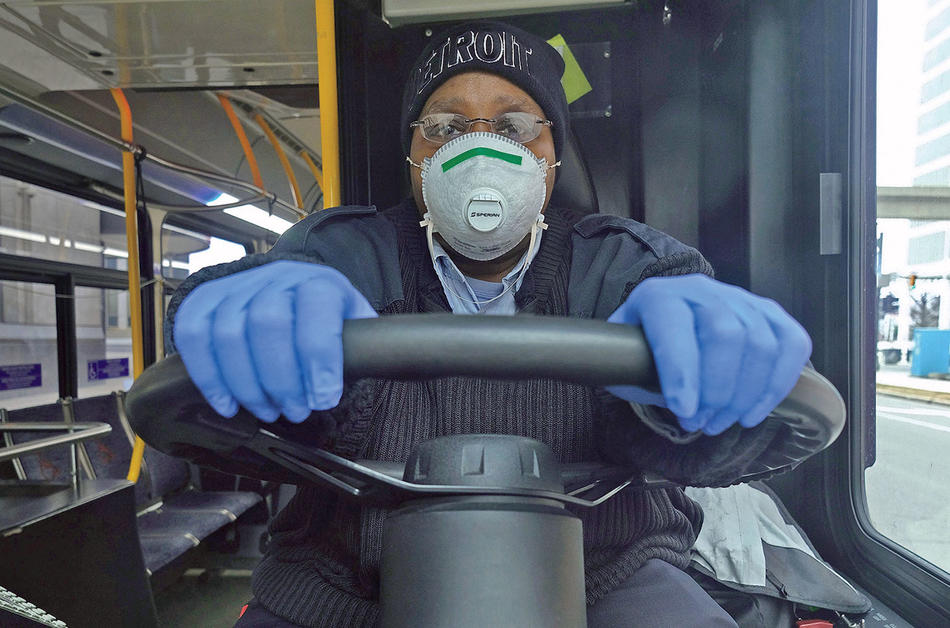When the new coronavirus first emerged in the United States, some observers called it the great equalizer, a pathogen that attacked widely and indiscriminately, paying no heed to income, race, or class. But statistics now tell a different story.
People of color in the United States, particularly African-Americans, have been dying from COVID-19 in disproportionately high numbers in every region of the country. In Michigan, for example, Black people have accounted for roughly a third of all deaths in a state where they are just 14 percent of the population. In Louisiana, which is 33 percent Black, some 70 percent of deaths have occurred among African-Americans. Similar discrepancies can be found from New York to the Midwest to California.
Those numbers are staggering, but they should not be surprising, according to Ashwin Vasan, assistant professor of clinical population and family health and medicine at the Mailman School of Public Health and the Vagelos College of Physicians and Surgeons. “This disease is exposing the structural fissures in our society,” says Vasan. “You don’t need to be a scholar of health equity to know that folks are less healthy if they don’t have access to all the building blocks of a healthier life. This isn’t just some random phenomenon: it’s a product of decades and centuries of racist policy and politics that make it harder for people of color to gain access to capital, good schools, and good housing, let alone health care itself.”
With African-Americans and Latinos being uninsured at high rates — and being hit hard by COVID-19 — Vasan is calling for direct intervention. “We need to deploy critical tools — testing, tracing, education, awareness campaigns — into the communities that are most affected,” he says. “We need to go not only to communities that have high rates of infection and death but also to places at risk for future outbreaks. And that means meeting people where they live to combat the mistrust that’s been rightfully earned by the health system over decades. We need to go with humility and a real strategy and say, ‘This is what we need to do and why we need to do it, and we’ll make this easier for you.’ If we don’t go to where the problems are the worst and reach out to communities of color with equitable strategies, we’ll have lingering outbreaks that will throw sparks and create bigger outbreaks. If you want to shorten the epidemic, then that must be part of the plan. It’s nonnegotiable.”
The disparities are all the more unjust given that African-Americans and Latinos make up a large part of the essential workforce — bus drivers, grocery clerks, maintenance and sanitation crews, delivery people — that has risked exposure to the virus to keep American society on life support. In New York, thousands of transit workers have been infected and dozens have died. Similarly shocking tolls have been recorded around the country among supermarket employees.
“We have a huge responsibility to essential workers,” Vasan says. “We must ensure that they and their families have access to care, because they’re the ones sustaining whatever semblance of an economy we have. Many are falling through the cracks. In the case of workers who don’t have benefits or protections for when they do fall sick, where do they go? How do they get care? How do they know that going to the hospital won’t mean financial ruin? People have to know that they can go to a health-care facility without fear of financial calamity or immigration enforcement. And they need to know that now more than ever, because it’s not just a moral issue — it’s a public-health issue.
“These underlying inequities threaten all of us,” Vasan warns. “If people are forced to delay care due to lack of coverage, it increases the likelihood that they’ll spread the disease in the community or become severely ill or both, which puts additional stress on the health-care system. Our society is entirely interconnected.
“We’ve been having a debate in our democracy about incrementalism versus big structural change,” he says. “Now is the time to talk about how we want to reshape our society and our economy, because we’re not going to be the same coming out of this. If ever there was a chance to make big change, it’s now.”
This article appears in the Spring/Summer 2020 print edition of Columbia Magazine as part of the cover story, "What We Have Learned From the Pandemic (So Far)."



